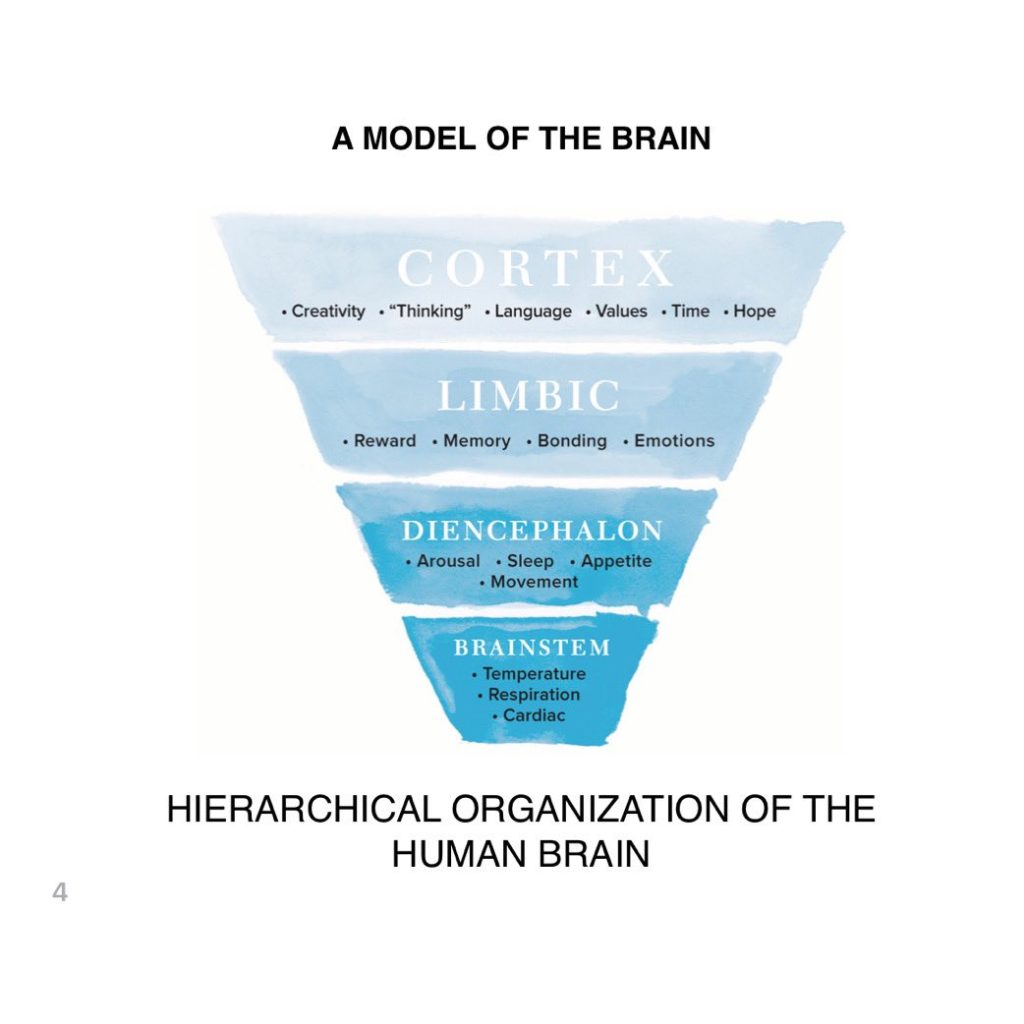
Part 1 of my 3-part review of the book, ‘What Happened To You’ by Oprah Winfrey & Dr. Bruce D. Perry.

I’ve spent a lifetime trying to understand why I think and behave the way I do, and why my experience has always felt so isolated. As I said in the May Issue of my monthly newsletter, this book was pivotal for me, not only because it allowed me to reach new answers to questions I’ve asked myself for decades like “why am I like this?” and “why do I keep falling into the same patterns of behavior?”, but it also helped me grow in my empathy and compassion for others.
The essential mindset shift this book nurtures reframes the common expression, “what’s wrong with you?”, to a more curious POV angled by a slightly different posture: “what happened to you?”. Co-authors Oprah and her good friend, psychiatrist and neuroscientist, Dr. Perry explain how analyzing the way your brain functions the way it does is concurrent with the examination of a house’s current health.
To understand its strong points and challenges, you must consider the house’s history and how that has informed its organizational structure. A house built with faulty pipes can be expected to function with plumbing problems until the issue is identified and fixed. Much like a house with faulty plumbing, what happened to us in the early stages of life can have a lifetime’s worth of ripple effects on our mental and physical health if left unattended.
Through a mixture of storytelling and scientific explanation, Oprah and Dr. Perry outline how our first experiences similarly shape our worldview, or “personal codebook”, that guides us through life and dictates our every relationship, interaction, and decision.
How your brain organizes information
“Our brain is organized to act and feel before we think.”
– Dr. Perry
The bottom part of your brain (called the brain stem) controls your emotions and regulatory functions such as breathing, temperature, and heart rate. The top part of your brain (called the cortex) controls your ability to apply reason and logic. All input from experiences you have in the external world first passes through the brain stem before it can reach the cortex. When you are exposed to prolonged periods of extreme, unpredictable, or uncontrollable stress, you can become dysregulated. When this happens, the input your brain receives from the outside world is literally unable to reach the higher levels of your brain, resulting in irrational, self-destructive behavior.

The brain has one job
The function of the brain is to identify patterns in order to make sense of the world around you. Confirming familiarity is how it determines what is “safe” vs. “danger”. The brain stem acts as the gatekeeper, constantly scanning new experiences for familiar patterns and measuring them against your previously stored experiences. This explains how unconscious bias is formed and why it is applicable to every human being breathing on this planet. When you are “triggered”, it is because your brain stem is matching some evocative cue (or sensory input) you are currently experiencing with a previous experience it registered as unsafe, and consequently a traumatic memory was stored.
“The brain is a meaning-making machine, always trying to make sense of the world.”
An example the authors use is of one of Dr. Perry’s former clients, a military veteran who experienced severe trauma from serving in the Vietnam War. One day, the client was walking down the street with his girlfriend when a motorcycle passing by revved its engine, producing a loud, jarring sound that rang familiar to his brain stem’s emotional memory of being in active combat.
The brain stem can’t decipher the difference between what’s currently happening and its previously stored memories of being in active combat because it cannot tell time. Remember, its *only* job is to keep you “safe” by identifying functional and emotional familiarity with existing memories and signal to your body accordingly. Therefore, the client’s stress response system was involuntarily activated and he dropped onto his stomach in the street behind a parked car with his hands over his head as if he was being shot at. A few seconds later he looked up and saw everyone, including his girlfriend, staring at him in confusion.
Self-care is self-regulation
“Your body is always speaking to you.”
– Oprah Winfrey
When your stress response system is activated, you might feel your heart race, your palms sweat, or a pit of emotion gathering in your core. Some people notice an involuntary “ticking” in one of their legs. These are all signals your brain sends to your body when something you’re thinking or experiencing registers as an oncoming threat.
Self-care is essential to wielding control of your stress response system. Learning to regulate yourself is to find balance on the swinging pendulum of emotional reactivity. This is important because as the science suggests, living under constant activation patterns of stress can lead to medical conditions ranging from anxiety and depression to strokes, diabetes, and heart disease.
Rhythm regulates you
One thing you can always rely on to regulate yourself is rhythm.
Your brain stem is soothed by sensory activities that introduce rhythm, like music, dancing, art, or exercise. This theory explains why it’s so effective to rock or sing to a crying baby to get them to calm down. Rhythm is regulating.

Caregivers and adults teach children how to self-regulate by providing external regulation when they are in distress. Children who receive consistent, nurturing care when their stress response systems are activated will develop a worldview that believes people are good and the world is a safe place for them to explore. Contrastingly, children who are neglected when in distress or exposed to prolonged periods of stress activation will develop a worldview that is constantly scanning new people and experiences for potential threats.
“Our internal view of the world becomes a self-fulfilling prophecy; we project what we expect, and that elicits what we expect.”
An unpredictable, prolonged, extreme pattern of stress will result in an overly reactive stress response. Meanwhile, a controlled, predictable pattern of stress can produce a resilient, flexible stress response.
How your stress response system develops
In today’s society, there are too many adults who are unaware of how to regulate themselves, making it impossible to teach their children how to build their own self-regulating capacities. An overwhelmed, exhausted, dysregulated parent will have a difficult time regulating a child, which will affect them in two ways:
- Affects the development of the child’s stress response system, creating an overly-sensitive and overreactive response to stress and adversity.
- Creates problems for how the child learns to connect with others and build relationships.
What determines long-term effects are the pattern of stress activation and the accessibility a child has to healthy, positive relationships. Relational health is the savior ingredient that counteracts the aftereffects of trauma and neglect.
The impact of early development
What happens to you in your first two years of life (and most importantly in the first two months) holds a particularly significant influence over how your stress response systems develop. Your stress response systems are your brain’s way of keeping you “safe” from new situations or experiences it registers as potentially threatening.
While one child might register eye contact from a caregiver or adult as a loving act of undivided attention, another might register the same gesture as a warning they are about to be harmed. The difference in interpretation depends on the patterns of activation in those early years. When a child subjected to prolonged, unpredictable, or extreme stress patterns, they will become chronically dysregulated, which can manifest in a lifetime of learning and behavioral issues.
Read Part II: How To Communicate Effectively With A Dysregulated Person.
Read Part III: How To Rewire Your Stress Response System To Be More Resilient..
For more of this content, subscribe to my monthly newsletter here.


















6 responses to “Understanding The Meaning-Making Machinery Of Your Brain”
[…] Read Part I: Understanding The Meaning-Making Machinery Of Your Brain. […]
[…] Read Part I: Understanding The Meaning-Making Machinery Of Your Brain. […]
[…] Therapy (CBT). Your therapist may suggest CBT as a treatment for ROCD. CBT aims to identify and modify unhelpful thought patterns and behaviors. Through CBT, you can learn to challenge negative thoughts, reframe irrational beliefs, and develop […]
[…] brain has one job and one job […]
[…] from the outside world enters your brain stem (the lower, functional and emotional part of the brain) and measures it against familiar, previously stored […]
[…] I might start plucking my hairline next. Yet, now that I’ve done my own extensive research on how the stress response system develops and can look back on the emotional memory of my childhood at that time, it all makes perfect sense. […]